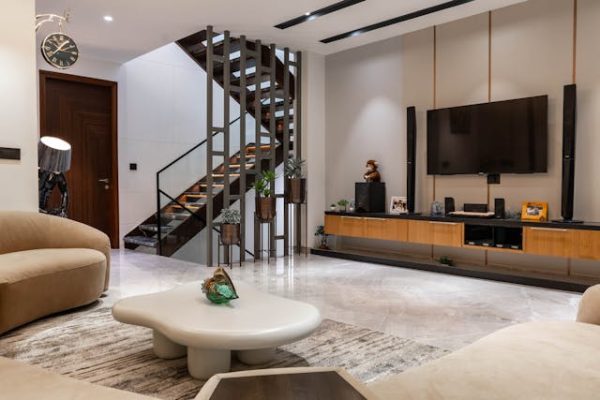
Taking on a home renovation is both exciting and overwhelming. Whether you’re updating a few rooms or going for a 360-degree makeover, every decision counts. Good planning can save you money, time, and frustration. Poor planning? It can leave you with delays, overspending, and results that don’t match your expectations.
This guide breaks down the renovation process step by step. Whether you’re refreshing a forever home or fixing up an older house to resell, knowing where to begin and what to prioritize will set you up for success. Let’s get started.
- Planning Your Renovation: Where to Begin
Before you pick out paint colors or knock down a wall, you need a plan. The best place to start is by understanding your renovation goals. Are you improving the home for comfort, resale value, or both? Once you know what you’re trying to achieve, you can start to prioritize projects that support those goals.
Set a budget and expect the unexpected. Renovations almost always come with surprises. Next, think about what work you can realistically handle on your own and where you’ll need to bring in professionals. Not all DIY saves money, especially when mistakes lead to costly repairs.
- Roofing: What to Know Before You Build Beneath It
If you’re renovating a fixer-upper, the roof deserves early attention. It’s easy to get excited about interiors, but none of that matters if the structure isn’t sound. A failing roof can lead to serious damage inside the home, including leaks, mold, and even structural issues.
Check for missing or curling shingles, dark streaks, sagging, and signs of moisture inside the attic. These are all indicators that your roof may be near the end of its life. In many older homes, patching isn’t enough. You may need a full replacement.
Professional roofing installation is key. Hire licensed roofers who understand your climate and can recommend the right materials. A well-installed roof can last for decades, but a rushed or sloppy job will fail long before that. Always ask for references, proof of insurance, and details on the warranty offered.
- Structural Integrity and Foundation Issues
Once the roof is secure, your next priority is the foundation and framing. Any problems here must be addressed before you move on to cosmetic work. Cracks in the walls, sloping floors, and doors that don’t close properly can point to foundation shifts or structural weakening.
Older homes are especially prone to settling and water-related damage. If you suspect serious issues, bring in a structural engineer or qualified inspector. It’s better to spend money now fixing the root problem than to redo surface work later when cracks reappear or worse, safety becomes a concern.
- Electrical, Plumbing, and HVAC Upgrades
Modern comfort relies on systems you can’t always see. Old wiring, outdated plumbing, and inefficient HVAC systems are common in older homes. These should be brought up to current code early in the renovation process.
If your home hasn’t been updated in 30 or more years, chances are it needs new electrical panels, outlets, and possibly rewiring. Plumbing might need to be replaced, especially if you find galvanized pipes, which are prone to corrosion. As for heating and cooling, upgrading to energy-efficient systems may seem expensive initially, but you’ll get your money’s worth with lower utility bills and improved comfort.
Please note: You must never attempt electrical or gas work on your own unless you’re licensed. These systems carry serious risks when handled improperly.
- Flooring: More Than Just a Style Choice
Flooring does more than just look good. The right choice impacts durability, comfort, and maintenance. If you’re working with a home that has old or damaged floors, inspect what’s underneath before making a decision. Subflooring may need repairs, especially if there was previous water damage.
For high-traffic areas, consider tough materials like tile or engineered hardwood. Carpet may work in bedrooms, but it’s rarely ideal for shared living spaces. Make choices based on how you use each room, not just on design trends.
- Kitchen Remodels: Function Comes First
The kitchen is one of the most used rooms in any home, and it’s also one of the most expensive to renovate. Before you think about finishes and colors, focus on the layout. A well-designed kitchen should make daily tasks easier, not harder. That means good flow between the stove, sink, and refrigerator—often referred to as the kitchen triangle.
If you’re taking the kitchen down to the studs, think about how to maximize storage and counter space. Deep drawers, pull-out shelves, and built-in organizers can make a big difference in how usable the space feels.
Ventilation also matters, especially if you cook often. A quality range hood will improve air quality and prevent grease from building up on surfaces.
- Bathrooms: Efficiency and Comfort Combined
Bathrooms might be small, but they require careful planning. If you’re gutting an old bathroom, you may uncover water damage, mold, or poor workmanship from earlier renovations. These issues must be fixed before you install anything new.
Consider how the space will be used and what features matter most. Walk-in showers are popular and practical. Double vanities can reduce traffic jams in shared bathrooms.
Proper ventilation prevents mold and extends the life of your finishes. Therefore, a good exhaust fan with the right capacity for your room size is essential.
- Maximizing Natural Light
Light changes the entire feel of a home. Rooms that are bright and well-lit tend to feel larger and more welcoming. If your renovation budget allows, enlarging windows or adding new ones can make a dramatic difference.
Even small changes can help. You can replace heavy curtains with lighter treatments, repaint dark walls in neutral tones, or hang mirrors to reflect light. If privacy is a concern, consider frosted glass or layered window treatments that let in light while still providing coverage.
- Interior Design: Tying It All Together
Once the major renovations are done, it’s time to make the space feel like home. Interior design isn’t just about decoration—it’s about how a space feels and functions. Choose a consistent color palette to create flow between rooms. This helps even small or awkward layouts feel cohesive.
Invest in quality over quantity. A few well-chosen pieces of furniture or art have more impact than a cluttered room full of trendy decor. Think about texture, scale, and proportion. Mix soft elements like rugs and textiles with harder surfaces like wood or metal for balance.
Your design should reflect your lifestyle. Don’t try to recreate a magazine spread if it doesn’t suit how you live. The goal is comfort, not perfection.
Renovating your home is a major commitment, but when done thoughtfully, it’s one of the most rewarding investments you can make. Start with strong planning, take care of structural and system upgrades early, and then move into design and function. Don’t rush the process—quality takes time, and the right decisions now will serve you for years to come.

